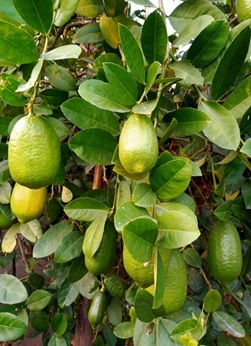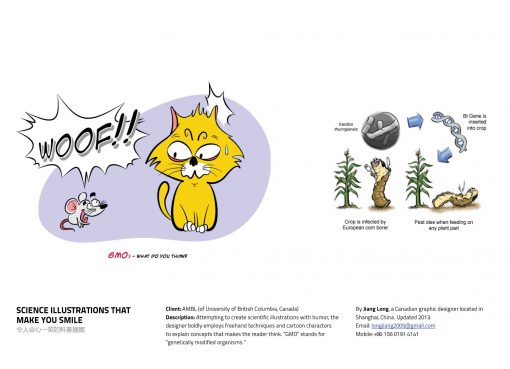Assam lemon: A magical fruit
Dr. Mohesh Gogoi
Dept. of Botany
Science College, Kokrajhar
E-mail: mohesh.gogoi@rediffmail.com
Recently a tropical fruit has gained tremendous importance and the said popular fruit is nothing other than Lemon. The reason behind its ever-increasing demand is the presence of high quality nutrients along with ascorbic acid that maintains the immune system functioning and protects from Corona virus (SARS-Cov-2) infection. As such the term magical fruit is attributed to lemon to recognize its nutrient contents. A question may be raised as to why lemon is morphologically different from other fruits and which type of fruit does it represent? Therefore, a humble attempt has been made here to present some features of a lemon fruit on the basis of my personal observations along with its nutritional value.

Lemons (Citrus limon Brum f.) are among the world’s most popular citrus fruits belonging to the family-Rutaceae (Swingle, 1967; Gogoi et al., 2003). It is called by various names in India: limbu, limu, nimbu (Hindi), nemu (Assamese), which has a striking phonetic resemblance to the word limun, limuna and limung (Bhattacharya and Dutta, 1956). Hesperidium is a kind of fleshy fruit produced by mature lemon tree (Dutta, 2005). The fruit is oval shaped with a pointed outgrowth on its tip and slightly tapering at the base. Out of the three layers, the endocarp projects inwards, forming distinct chambers, the epicarp and mesocarp fused together, form the skin of the fruit. The white-coloured juice vesicles are tightly arranged in the chamber. Moreover, the smooth, shining and yellow coloured surface is another fascinating morphological character of the lemon fruit.
Needless to mention that Citrus (Lemon) fruit contains a number of essential chemicals and vitamins that are beneficial to our health. The major compositions are citric acid, malic acid, sucrose, reducing sugars, fats and essential oils, glycosides, pectins, anthocyanin, β-carotene, Vitamin C, Vitamin E and Vitamin B6 (Aiyappa, 1965; Mankad, 1994; Gogoi, 2019). About 89 percent water, 22 calories per 100 g along with Iron, Calcium, Magnesium and Potassium are found in lemon. Nutrients present in 100 g of lemon (https://www.nutritionix.comand https://www.nutritionvalue.org) is given below:
- Protein: 0.4 g
- Carbohydrates: 6.9 g
- Sugar: 2.5 g
- Fat: 0.2 g
- Fiber: 0.3 g
- Vitamin C: 38.5 mg
- Vitamin E: 0.15 mg
- Vitamin B6: 0.046 mg
- Iron: 0.08 mg
- Calcium:6.00 mg
- Sodium: 1.00 mg
- Magnesium: 6.00 mg
- Potassium: 103 mg
Known for adding flavour, freshness and acidity to drinks and foods, lemons are the most commonly used citrus fruit (Ghosh, 1990). Lemon juice is energetic, nutritious and enriched with vitamins and minerals (Ware and RDN, 2019). A number of health benefits are derived when a cup of lemon juice is drunk regularly.
- Vitamin E or tocopherol has antioxidant property that prevents the formation of peroxides.
- B6 or pyridoxine is a constituent of coenzyme pyridoxal phosphate that involves in non-oxidative degradation of amino acids. It is also essential in the synthesis of haem for haemoglobin and cytochromes.
- Vitamin C or Ascorbic acid is an essential vitamin and antioxidant (Berry, 1990) that intervenes positively in some vital health processes like –
- Maintains proper functioning of the immune system.
- Dissolve cholesterol in blood.
- Protects the body against stress.
- Plays an important role in wound repair and activates metabolism.
- Maintains the bones, cartilages and teeth.
- Helps to keep the skin healthy.
- Enhances the absorption of iron from vegetables, cereals and fruits.
Agro-climatic conditions of Assam and other north eastern states of India are suitable for lemon cultivation (specifically for Assam lemon variety). A healthy lemon tree produces more than 1200fruits per year and this quantity of fruit is enough to meet a household demand. Since, it has a tendency to generate new plants by extending young vegetative shoots when the area remains under protection. Moderate rainfall is favorable for growth and development of lemon tree but perennial water logging condition reduces the production as a whole. Easy to regenerate by means of vegetative propagation from a mother plant once it is grown in home garden. Therefore, the author would like to suggest for its backyard plantation first and then to expand its cultivation to a larger plot slowly. It is beyond doubt that a lot of scope is lying in front of us to engage the young enthusiastic people in the lemon (citrus) industry.
References:
- Aiyappa, K.M. and Srivastava, K.C. (1965). Oranges, lemons and limes. Bulletin, Directorate of Extension, Ministry of Agriculture & Irrigation, Shastry Bhawn, New Delhi.
- Berry, A.K. (1990). Vitamins. A Text Book of Biochemistry (1st Edition). Emkay Publication, Delhi. pp. 203-221.
- Bhattacharya, S.C. and Dutta, S. (1956). Classification of Citrus fruits of In: Scientific Monograph No. 20. I.C.A.R, New Delhi.
- Dutta, A.C. (2005). Botany. Oxford University Press. pp. 103-110.
- Ghosh, S.P. (1990). Citrus. In: Bose, T. K. and Mitra, S. K. (Eds.), Fruits: Tropical and Subtropical (1st edition). Naya Prakash, Calcutta. pp. 64-131.
- Gogoi, M.; Singh, B.; Rethy, P.; Mishra, A.K. and Kalita, S. (2003). Citrus species in Arunachal Pradesh: Diversity and Economic Prospect. Indian Journal of Citriculture 2(1): 1-9.
- Gogoi, M. (2019). NemuKheti (Lemon Cultivation – A Hand Book). Purbayon Publication, Guwahati.
- https://www.nutritionix.com/food/lemon/100-g
- https://www.nutritionvalue.org/Lemon_juice%2C_raw_nutritional_value.html
- Mankad, N.R. (1994). Citrus in India. Wiley Eastern Ltd., New Delhi.
- Swingle, W.T. (1967). The Botany of the Citrus and Its wild relatives. In: Reuther, W., Webber, H. J. and Batchelor, L. D. (Eds.), Citrus Industry. Vol. I. pp. 190-430. (2nd edition). University of California, USA.
- Ware, M. and RDN, L.D. (2019). How can lemons benefit your health? Medical News Today. November – 4.




